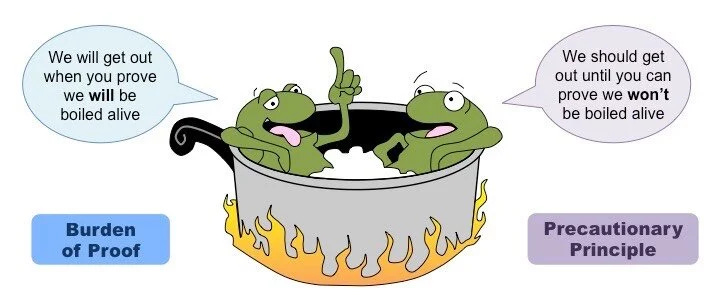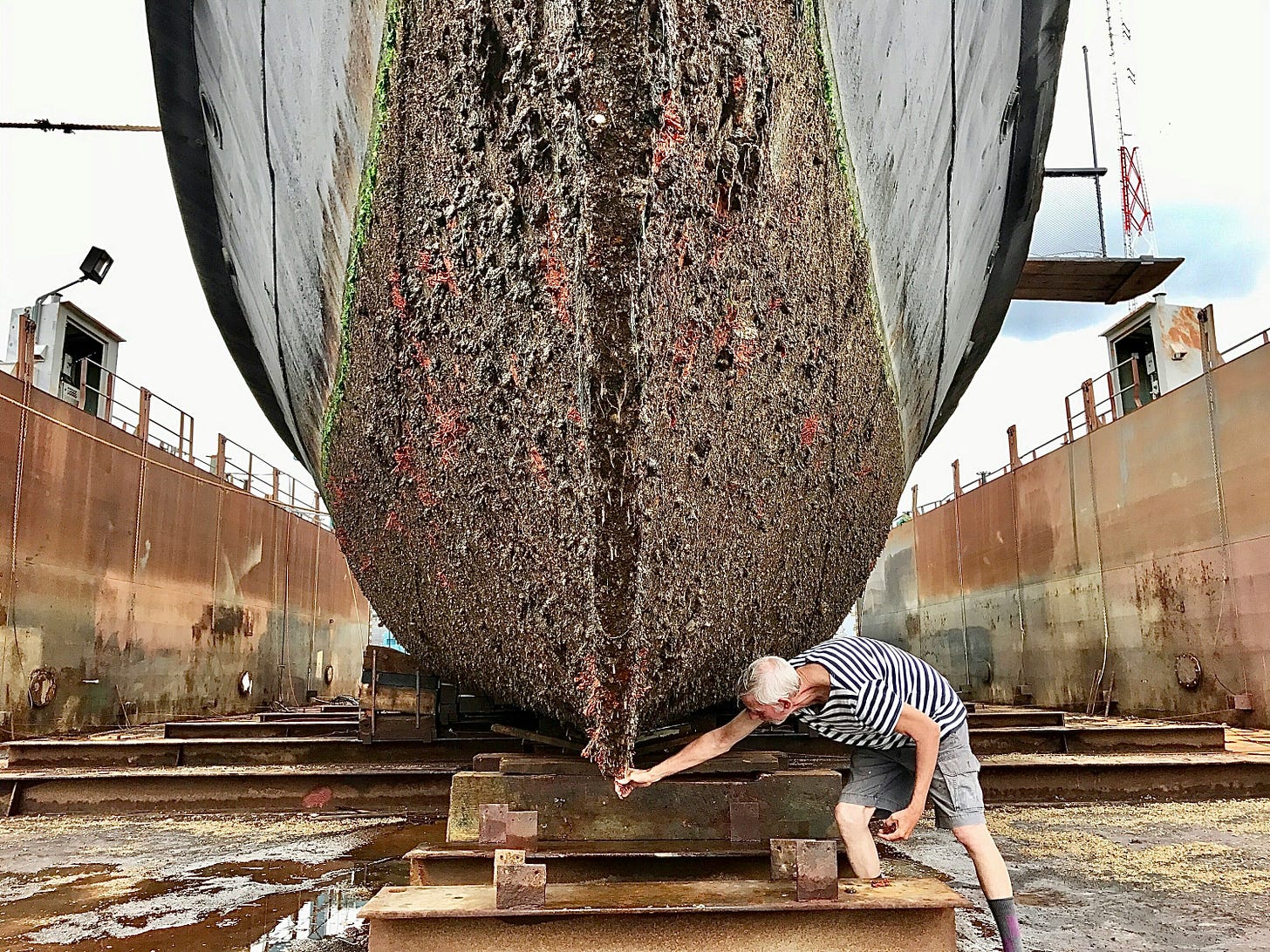🔮 How Europe outsourced its future to fear
When precaution becomes stagnation — a guest essay
Hi, it’s Azeem, here with a special guest essay.
Europe once stood alongside the United States as a central force shaping global technology and industry. Its relative decline in the digital era is often pinned on regulation and bureaucracy.
But our guest, Brian Williamson – Director at Communications Chambers and a long-time observer of the intersection of technology, economics and policy – argues the deeper issue is a precautionary reflex that treats inaction as the safest choice, even as the costs of standing still rise sharply.
Over to Brian.
If you’re an EV member, jump into the comments and share your perspective.
It’s time to jettison the precautionary principle
“Progress, as was realized early on, inevitably entails risks and costs. But the alternative, then as now, is always worse.” — Joel Mokyr in Progress Isn’t Natural
Europe’s defining instinct today is precaution. On AI, climate, and biotech, the prevailing stance is ‘better safe than sorry’ – enshrined in EU law as the precautionary principle. In a century of rapid technological change, excess precaution can cause more harm than it prevents.
The 2025 Nobel laureates in Economic Sciences, Joel Mokyr, Philippe Aghion, and Peter Howitt, showed that sustained growth depends on societies that welcome technological change and bind science to production; Europe’s precautionary reflex pulls us the other way.
In today’s essay, I’ll trace the principle’s origins, its rise into EU law, the costs of its asymmetric application across energy and innovation, and the case for changing course.
How caution became doctrine
The precautionary principle originated in Germany’s 1970s environmental movement as Vorsorgeprinzip (literally, ‘foresight principle’). It reflected the belief that society should act to prevent environmental harm before scientific certainty existed. Errors are to be avoided altogether.
The German Greens later elevated Vorsorgeprinzip into a political creed, portraying nuclear energy as an intolerable, irreversible risk.
The principle did not remain confined to Germany. It was incorporated at the EU level through the environmental chapter of the 1992 Maastricht Treaty, albeit as a non‑binding provision. By 2000, the European Commission had issued its Communication on the Precautionary Principle, formalizing it as a general doctrine that guides EU risk regulation across environmental, food and health policy.
Caution can cut both ways
Caution may be justified when uncertainty is coupled with the risk of irreversible harm. But harm doesn’t only come from what’s new and uncertain; the status quo can be dangerous too.
In the late 1950s, thalidomide was marketed as a harmless sedative, widely prescribed to pregnant women for nausea and sleep. Early warnings from a few clinicians were dismissed, and the drug’s rapid adoption outpaced proper scrutiny. As a result of thalidomide use, thousands of babies were born with limb malformations and other severe defects across Europe, Canada, Australia, New Zealand and parts of Asia. This forced a reckoning with lax standards and fragmented oversight.
In the US, a single FDA reviewer’s insistence on more data kept the drug off the market – an act of caution that became a model for evidence‑led regulation. In this instance, demanding better evidence was justified.
Irreversible harm can also arise where innovations that have the potential to reduce risk are delayed or prohibited. Germany’s nuclear shutdown is the clearest example. Following the Chernobyl and Fukushima accidents — each involving different reactor designs and, in the latter case, a tsunami — an evidence‑based reassessment of risk would have been reasonable. Instead, these events were used to advance a political drive for nuclear phase‑out which was undertaken without a rigorous evaluation of trade‑offs.
Germany’s zero‑emission share of electricity generation was about 61% in 2024; one industry analysis found that, had nuclear remained, it could have approached 94%. The missing third was largely replaced by coal and gas, which raises CO₂ emissions and has been linked to higher air‑pollution mortality (about 17 life‑years lost per 100,000 people).
In Japan, all nuclear plants were initially shut after Fukushima. They overhauled the regulation and restarted permits on a case-by-case basis, under new, stringent safety standards. They never codified a legalistic ‘precautionary principle’ and have been better able to adapt. Europe often seeks to eliminate uncertainty; Japan manages it.
Innovation, stuck in dry dock
A deeper problem emerges when caution is applied in a way that systematically favours the status quo, even when doing so delays innovations that could prevent harm.
A Swedish company, I‑Tech AB, developed a marine paint that prevents barnacle formation, which could improve ships’ fuel efficiency and cut emissions. Sixteen years after its initial application for approval, the paint has not been cleared for use in the EU, though it is widely used elsewhere. The EU’s biocides approval timelines are among the longest globally. Evaluations are carried out in isolation rather than comparatively, so new substances are not judged against the risks of existing alternatives. Inaction is rewarded over improvement.
This attitude of precaution has contributed to Europe’s economic lag. Tight ex‑ante rules, low risk tolerance and burdensome approvals are ill‑suited to an economy that must rapidly expand clean energy infrastructure and invest in frontier technologies where China and the United States are racing ahead. The 2024 Draghi Report on European competitiveness recognized that the EU’s regulatory culture is designed for “stability” rather than transformation:
[W]e claim to favour innovation, but we continue to add regulatory burdens onto European companies, which are especially costly for SMEs and self-defeating for those in the digital sectors.
Yet nothing about Europe’s present circumstances is stable. Energy systems are being remade, supply chains redrawn and the technological frontier is advancing at a pace unseen since the Industrial Revolution.
AI and the costs of stagnation
Like nuclear energy, AI may carry risks, but also holds the potential to dramatically reduce others - and the greater harm may lie in not deploying AI applications rapidly and widely.
This summer, 38 million Indian farmers received AI‑powered rainfall forecasts predicting the onset of the monsoon up to 30 days in advance. For the first time, forecasts were tailored to local conditions and crop plans, helping farmers decide what, when, and how much to plant – and avoid damage and loss.




